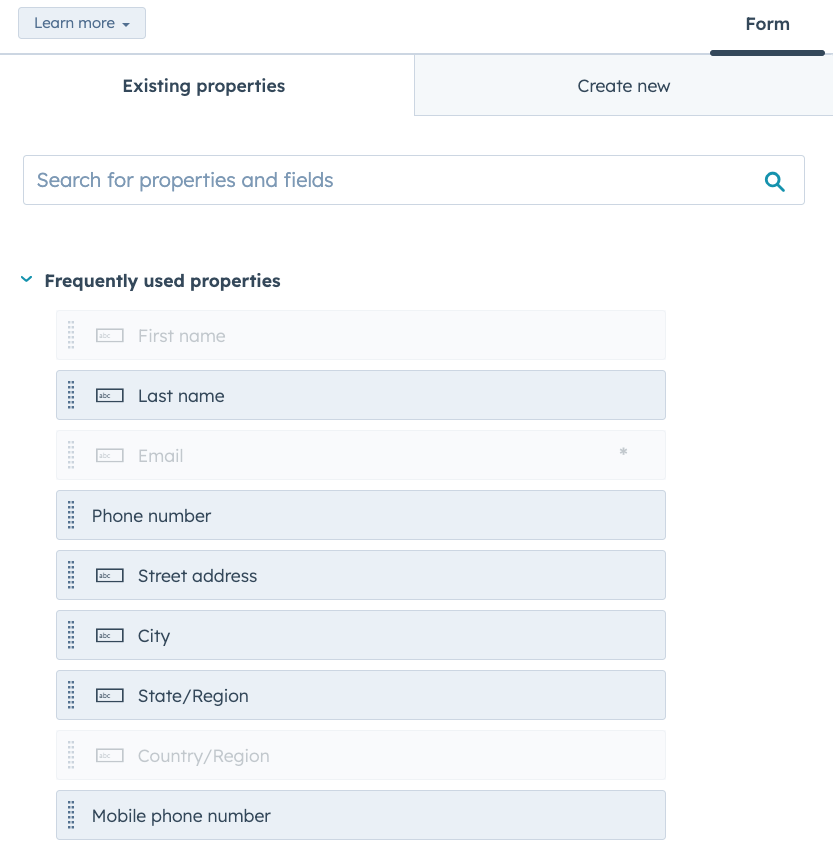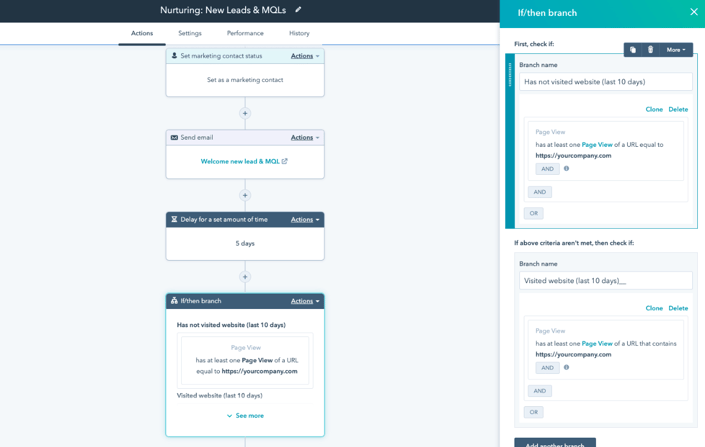Auditing your HubSpot portal is essential to ensuring your marketing, sales, and customer service efforts are as effective as possible. Picture an audit as a thorough digital spring clean; you will want to take a hands-on approach to identify any hidden corners where data and processes may collect dust. By actively uncovering gaps, you're polishing and fine-tuning your system, ensuring everything shines brightly. This meticulous process empowers you to make informed decisions and will improve your functional use of HubSpot tenfold. But before we get into the what, let’s chat about the why.
Why is Auditing Important?
- Improves your company's accountability: Auditing your HubSpot portal helps to identify any areas that may be causing internal and external problems. It can help your organisation discover failed processes and allow you to implement new strategies to create a more positive experience for your customers and your team.
- Offers valuable insights into customer behaviour and preferences: Auditing your portal can double as an opportunity to review and inform marketing strategies and optimise campaigns for maximum growth potential.
- Gain valuable insights: Analysing data from past sales or customer interactions will help you recognise what works best for your target audience. It can also point you towards areas that could increase your revenue and ROI over time. You can utilise this information to fine-tune existing portal strategies and make informed adjustments to future plans, ensuring the maximisation of results within your HubSpot environment.
- Ensures operations are running optimally: Continuously analysing any potential risks early on, before they become major issues down the line, provides an opportunity to implement relevant portal improvements to help reach your goals faster.
So, now you know the why, let’s get into the what. We have laid out ten of our top tips and areas to get you started, providing a clear path to where and how. By the end of this, your HubSpot portal isn’t going to know itself - make over time! We recommend walking through these tips individually, ensuring no stone is left unturned.
Top 10 HubSpot Portal Auditing Tips
1. Audit your website
For any digital-style audit, analysing your website data is a great way to get a quick birds-eye view of how your people interact with your content. Even better, it can also give you valuable insights into the cleanliness of your data and website, ensuring that all your data is being collected correctly and that all your pages and modules are still relevant.
To start, you can jump directly onto your website and start testing your forms and event interactions on different pages. Then you can jump into your HubSpot reporting dashboards to gather data such as new visitor sessions, bounce rates, page views, click-through rates and much more.
Questions to ask yourself when auditing your Website:
Practice Runs:
Have you conducted thorough testing of your website, including forms and integrations, to ensure the seamless flow of data into your HubSpot portal? Are all data inputs and interactions functioning as expected during your audit?
Consolidation of Data:
Have you consolidated data for relevant insights during your website audit?
Have you compared current insights with the previous month's indicators to identify areas of progress or potential issues?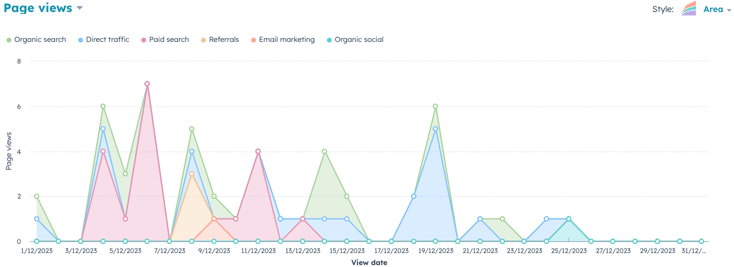
2. Testing and optimising existing landing pages
The landing page tool in HubSpot makes it very easy to create pages to help convert your customers. However, setting and forgetting these landing pages can be just as easy. Testing and optimising your landing pages is essential for a good audit, as these pages are a crucial part of improving the effectiveness of your digital efforts. Landing pages should periodically be tested against various metrics such as page views, click-through rate (CTR), conversion rates and bounce rate to optimise them to deliver the best results possible.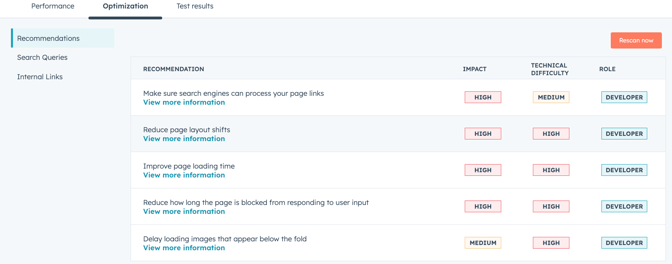
You can start optimising your landing pages by testing different designs or page layouts that may reveal new opportunities for increased conversions or improved customer experiences.
Questions to ask yourself when auditing your Landing Pages:
Crafting relevant content:
Does your headline still clearly communicate the benefits, helping visitors understand what they gain by staying engaged? Does the headline still effectively convey the value proposition to encourage visitor engagement? Is the hero image still relevant? Does it vividly illustrate the offered value or benefits?
Using a thank you page:
Are you incorporating a thank-you page in your process to express gratitude after visitors provide their data or information? How does the thank-you page currently contribute to deepening the relationship with your visitors, and is it optimised for a positive user experience?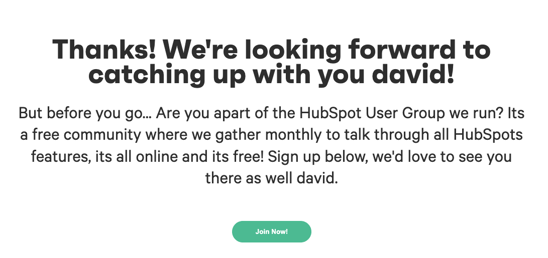
If you’re keen to learn more about optimising your landing pages, check out our four tips for success. You’ll become a master in no time!
3. Reviewing your contact database
Alright! Now, let’s get into the nitty-gritty stuff. Another important step in optimising your HubSpot portal is monitoring your contact database or CRM. This data is essential and one of your company's main assets.
This is why checking your data accuracy and cleanliness and ensuring all contact information is up-to-date, accurate, and complete is extremely important. This includes checking to ensure email addresses are valid and not bouncing back or ensuring there are no duplicate contacts within your CRM.
Questions to ask when auditing your contact database
Merge duplicate contacts:
Have you thoroughly reviewed your customer data to identify and merge any duplicate contacts that might be present? Are you utilising CRM tools, such as those available in HubSpot, to manage and prevent duplicate contacts effectively?
Update your contact data regularly:
How frequently do you update your contact details to ensure they are as current as possible? Are you actively gathering additional information to enhance the reliability of your data and facilitate successful segmentation? Are you leveraging progressive form fields on your forms to collect comprehensive and up-to-date contact details?
4. Review Account Settings and User Permissions
Regularly auditing user information ensures data accuracy and relevance, which is critical for effective collaboration between users engaged in the platform, enhancing security and controlling access to sensitive information. Granting access based on user needs contributes to overall productivity, and compliance with data protection laws is ensured by maintaining updated user details.
To do this, evaluate user roles and permissions, verify user profiles for up-to-date information, and customise user-related workflows to optimise efficiency. To go one step further, check your General Account settings to ensure all information, such as your business address and brand, is current. This isn’t just for show either; it will streamline the creation of assets like landing pages, emails, and forms.
To go one step further, check your General Account settings to ensure all information, such as your business address and brand, is current. This isn’t just for show either; it will streamline the creation of assets like landing pages, emails, and forms.
Questions to ask when auditing account settings and user permissions:
Create an explicit list of tasks and actions for users:
Have you established a detailed list of tasks and responsibilities for users before granting permissions in your HubSpot portal?
Align user's permission with company privacy guidelines:
Before granting permissions, have you compiled a comprehensive list of key information that should not be disclosed, aligning with company privacy guidelines to prevent potential compromise?
Review General Company information:
Have you filled in essential information in the general company information section, such as logos, company colours, and location?
5. Audit ChatBots and Conversations
In the ever-evolving landscape of digital engagement, the role of a ChatBot has become indispensable for businesses leveraging the HubSpot platform – acting as the ideal customer relationship representative who works tirelessly around the clock. However, like any powerful tool, monitoring its performance and continuously optimising based on your visitor's engagement is crucial to ensure it aligns seamlessly with your objectives.
For those already using a chatbot, you can start optimising it by mapping out common questions your clients ask, so that your bot can aid your customer enquiries team, speeding up the times for responses and enhancing customer satisfaction.
Think of it like your clients' normal interactive communication with your teams. The better your response set flows with your questions, the more engaging and natural the conversation will seem.
For those who haven't implemented a ChatBot, we would highly recommend doing so. A ChatBot can help your organisation explore additional avenues for information collection from your audience, allowing you to extract valuable insights that can inform marketing strategies. Here is a guide on how you can start setting up your ChatBot from scratch.
Some questions when auditing your ChatBot:
Does the ChatBot provide clear and concise information about products or services? Are you guiding them towards the right information, "educational links, intended pages or sources sought by clients”? Are the automated responses in the ChatBot customised to align with your brand's tone and voice?
Auditing ChatBot compatibility
Have you tested your ChatBot for compatibility across different devices and browsers? I.e. Mozilla, Explorer, Safari, tablets, desktop, laptop.
Auditing Complex Queries
Do you have a system in place to escalate complex queries from the ChatBot to your support team?
Auditing your Data Privacy on your ChatBot
Have you implemented privacy and data security measures to safeguard user information?
6. Deleting Bounced Contact Emails
Suppose you would like to have accurate email reports and campaigns. In that case, deleting bounced contacts as a part of your HubSpot auditing process will help ensure you have a reliable and authentic overview of your target audience’s engagement, enabling you to implement more concise communication and follow-up strategies.
With HubSpot, you can save time and effort in this process, as it excludes these contacts from future emails to protect your email sender's reputation, blocking them automatically.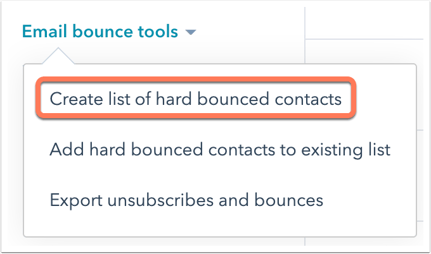
For more in-depth information on how to be on top of your contact emails, HubSpot has a great article that will take you through this process.
Questions to ask when auditing bounced contact emails:
Creating a static list of bounced emails:
Have you established a static list specifically for bounced emails to effectively segment and manage error contacts, ensuring they are excluded from regular email schedules?
Creating an active list:
Are you utilising an active list to leverage HubSpot's filtering capabilities for efficient handling bouncing email contacts?
7. Auditing your Custom Properties
Properties within your HubSpot portal are vital for storing essential information about your prospects and customers. As you add properties, you may notice they will start to accumulate fast - we have seen portals with 200 to 1000 custom properties! At this juncture, it becomes crucial to ensure proper organisation and relevance. Regularly deleting unused or irrelevant properties is ideal, considering that your organisation and information will evolve over time due to industry trends, company operations, or regulatory changes. This ensures that your portal’s landscape and its data remain streamlined and aligned with your evolving needs.
Hot Tip: Always check your existing properties first.
Avoid a common error when crafting forms to gather data from new or returning visitors: creating unnecessary new custom properties instead of utilising existing ones.
While generating a new form field aids in data storage, overlooking your current properties can lead to disorganisation and clutter in your information data. This oversight has a cascading impact, affecting the accuracy of your properties' updates and potentially disrupting automated workflows linked to designated property groups. Always take a glance at your existing properties before resorting to new ones 😉
Questions to ask when auditing your custom properties:
Keep your unused properties archived:
Are there any properties that you could consider archiving?
Are there any duplicate properties that you could merge or archive?
Add your properties to a group:
Are you actively grouping your properties to facilitate the identification of related properties within an object? If not, could you create a plan to group your properties in a relevant way?
HubSpot Reminder:
- Archived properties will only be stored for 90 days before they are permanently deleted.
- Properties can only be archived if they are not used elsewhere in your portal.
If you would like to dig deeper into organising, deleting or exporting your properties, HubSpot has a great, detailed guide to get you started.
8. Sync Contacts, Companies, and Lifecycle Stages
Ensuring that each contact collected in your portal is associated under a company name, deal or ticket in HubSpot helps your organisation have a more organised portal and a better outlook about the information on your assets to provide better experiences to each of your prospects.
Additionally, revising the division of your contacts into their lifecycle stages will enhance effective communication with your contacts as this property helps to determine where a specific contract or company is in your process and, more importantly, to better understand how leads are handed off between marketing and sales.
Finally, check if you're taking full advantage of HubSpot's automation to make it easier for relevant users, such as your sales team, to track the contacts that matter to them. To do this, you can start by turning on your sync ownership settings and enabling the “Assign company owner to contact by default” checkbox, which will automatically update the Contact owner property of the contacts associated with the company.
This helps to ensure consistency between the company and contact owners, offering several advantages throughout HubSpot. Utilising contact owners allows sending more personalised emails and facilitates setting up notifications and reports tailored to individual team members.
Questions to ask when auditing Syncing of contacts with companies and lifecycles:
Have you set up automatic updates to record lifecycle stages?
Have you created a workflow to be synced with your lifecycle stages?
General questions to help you sync your contacts, companies and lifecycle stages successfully:
Have you set up a default lifecycle for newly created records?
Have you updated your lifecycle stages with record interaction from connected apps “Facebook, Email, etc."?
Have you updated your lifecycle based on records associations?
9. Reviewing your HubSpot Automation
As with any system, regular updates and new features can make processes more efficient and effective over time, but only if you're keeping up with these changes.
Periodically reviewing the workflows in your HubSpot platform will help you save time and increase productivity by identifying older automations that may have been rendered obsolete.
Optimising your workflows will make it easier to more accurately segment contacts, send them relevant content, and monitor the effectiveness of your automation efforts. Effective workflows can also help your team be more responsive, with various notification options available, such as "email or phone text".
It also helps keep your data clean, whether you're automatically assigning contact owners, updating properties, or standardising information like addresses or mobile numbers. While adapting to the needs of your prospects based on their data collection and interaction.
The upside?
You can continue to provide personalised marketing campaigns that resonate with your audience. So, if your company is about improving efficiency, increasing revenue and delivering better customer experience, this review tip will be a big help.
Questions to ask when reviewing your HubSpot automation:
- When setting automation goals
Have you clearly set up the goals that you would like to achieve with the automation support? Have you shared them with your team so everyone is striving towards the same objective?
- When running a compliance check
Have you checked if your automation complies with the data protection regulations? Are you giving your contacts the option to unsubscribe from your emails?
- When HubSpot Updates are integrated into the platform
Have you checked if your marketing emails are following the best marketing practices?
Have you checked your processes or efforts after being sent? Are any being disrupted or outdated (i.e. email links, URL links, CTAs) Are you keeping up to date with the HubSpot updates and adjusting as necessary?
- When checking Conditional Logic
Is the original logic still accurate, and are any branches still relevant? Have you reviewed workflow performance and engagement to identify any areas of improvement?
The integration of automation tools could be very useful to increase efficiency. Still, it requires a good foundation, and this is why here at Neighbourhood, we created a Quick Guide that can help you Integrate Marketing Automation Tools.
10. Audit your lead scoring
Lead scoring in HubSpot is an important tool that allows your organisation to prioritise your leads based on their level of user engagement and likelihood to convert. Yet lead scoring is a methodology used to assign values to leads based on their behaviour and attributes, which are continuously evolving, and so are your business priorities, products and services.
This is why regular lead scoring optimisation is essential to allow your organisation to adapt to the shifts in the market by updating lead scoring to prioritise leads based on the most relevant criteria.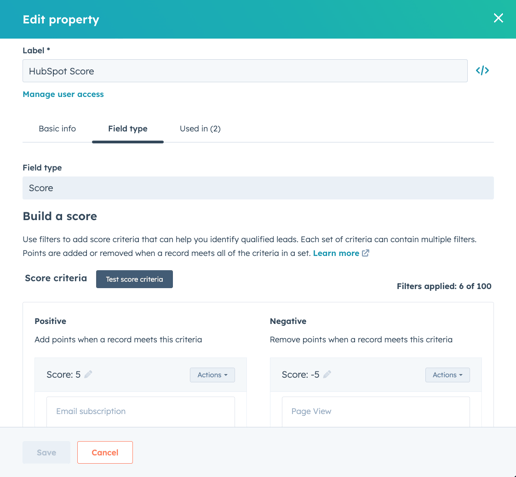
Tip: Remember to include your sales, customer service and marketing team to maximise department inputs for an ultimate overview.
Some questions to ask when auditing your lead scoring:
When reviewing the Engagement Metric:
Are you evaluating your engagement levels from past metrics? How about adjusting your lead scores based on past metrics?
When assessing Scoring Criteria Weighting:
Are you periodically reviewing the weight assigned to each scoring criteria? Are you ensuring that the points scored accurately reflect the current lead conversion? Have you identified an impact on your set lead scoring? Any behaviour or characteristic on the overall lead score that triggers the need for adjustments to your scoring criteria?
When considering Negative Scoring
Have you evaluated the potential impact of implementing negative scoring on decreasing communication efforts for lower-scored prospects? Do you have a strategy in place to retarget old contacts based on their lead score?
When monitoring Industry and Market Changes
Are you regularly monitoring changes in your industry and market? Have you established a system to foresee potential impacts on the significance of lead behaviours or characteristics?
Finding a way to implement lead scoring can be overwhelming but not impossible, so don't be shy to give us a shout or follow the link below for more details about How to Grow Sales through Predictive Lead Scoring 👇🏽
And there you have it; those are the top 10 tips that will assist you in maximizing the efficiency of your HubSpot portal, improving your company productivity, enhancing valuable engagement with your prospects and ensuring your operations are running at their best pace.
Happy HubSpot portal = Happy company results
If you have any questions on any of the tips or need further clarification about HubSpot, don't be shy and feel free to reach out — we are here to help you!
Feel like your HubSpot portal needs some love? Neighbourhood offers a free portal audit that breaks down each Hub's performance, and how you can optimise them to make the most out of your HubSpot investment! Grab your free portal audit in the link below!👇🏽

